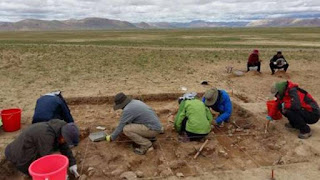Bhavanajagat
Welcome to Noble Thoughts from All Directions to promote the well-being of man and to know the purpose in Life.
WHO AM I? THE SCIENCE OF MAN
WHO AM I? THE SCIENCE OF MAN
It gives me pleasure to dedicate this blog post to the memory of Aristotle, the Father of Highest Science, First Philosophy, and Theology.

Aristotle surveyed the whole field of human knowledge as it was known in his day. He was at the Athenian Academy of Plato for 20 years. In 335 BC, he opened the Lyceum in Athens, a Center for speculation and research in every department of human inquiry. He became an authority for all philosophers, especially in Logic and in Natural Sciences. Logic, the theory of formal truth and validity originated in reflections on the practice of Dialectic introduced by Plato. For scientific knowledge, we need to know the governing principles of a subject and deduction from these principles provides not only the knowledge that something is true but also the reason as to why it is true. Aristotle is recognized as the Father of Science and he defined Science as a deductive system based on evident axioms.
ARISTOTLE’S METAPHYSICS – FIRST PHILOSOPHY, HIGHEST SCIENCE, AND THEOLOGY:

Aristotle’s Metaphysics, and Plato’s Dialectic describe a method of inquiry that deals with the nature and relation of things – What each is, how it differs from others, what common qualities all have, to what kind each belongs, and in what rank each stands in its kind and whether its being is real-being, and how many beings there are, and how many non-beings to be distinguished from beings. Metaphysics is concerned with the primary axioms, the universal principles applicable to all existence, and the transcendental properties of being. Aristotle claimed, “There is a Science which investigates being as being and the attributes which belong to being in virtue of its own nature.” The First Philosophy described by Aristotle speculates about being and its subject matter includes all existing things as existing, and involves not only the question how anything which exists, exists( i.e., the properties of being ) but also the question whether certain things, whose existence can be questioned, do in fact exist. In the words of Francis Bacon, we can make a distinction between Physics and Metaphysics. Bacon stated that Physics inquires into efficient and material causes; Metaphysics inquires into formal and final causes. For Aristotle, Science means the demonstration of universal and necessary conclusions from self-evident principles. The modern conception of Science is that it represents knowledge founded upon experiment and extended observation. For example, Isaac Newton in his book ‘OPTICS’ proposed to explain the properties of Light by using reason and experiments.
MAN’S ESSENCE – ‘KNOW THYSELF’:

The tradition of knowing oneself is the oldest established tradition in the history of man and it is a longer tradition than any other science. “Know Thyself” describes a study in which the Knower and the Known are One; the object of the Science is the Nature of the Scientist. In the Indian tradition, “PURUSHA” is the Man or the Knower, and his body or “KSHETRA” is the object of Inquiry, and the Knowledge that is discovered is known as “Kshetra Jnana.”
ARISTOTLE – NATURAL SCIENCE AND THE SCIENCE OF SOUL:

The Soul is the vital principle which moves and animates all life. Aristotle describes corporeal substances are composite of two principles; 1. Form and 2. Matter. What is called matter is a potentiality, what is called form is an actuality. In the above image of Amoeba proteus, its matter is constituted by its protoplasm, the living substance, and its actuality is recognized by the scientist when he observes its form. The existence of Amoeba proteus is known to man as it is made of two principles, the form, and the matter. The Natural Sciences are concerned with natural objects that are characterized by the fact that they are subject to change. Change is, therefore, the basic phenomenon. Matter and Forms are the Material and the Formal Cause respectively, of what comes to be. Aristotle distinguishes four kinds of Causes. For example, a Building or a Thing comes into being because of the Builder, or the Creator known as Efficient Cause. Formal Cause describes the Structure by virtue of which it is the Building or the Thing. Material Cause describes the matter such as stones or wood that has received the Structure. The end or purpose for which the structure, the Building or the Thing exists is known as the Final Cause. A building or a house provides a place of safety for the man who lives there. The purpose or the end of a life form is to sustain its state of living. Aristotle calls the forms of living things as “Souls”. “The soul is in some sense the principle of animal life.” As per Aristotle, “the study of the Soul falls within the Science of Nature.” The Greek inquiry into the soul extends beyond man, to all living things. So, it is relevant to investigate or inquire about the Soul that describes the Form known to us as Amoeba proteus.
ARISTOTLE’S TREATISE – “ON THE SOUL”: THE ESTABLISHMENT OF SPIRITUALITY SCIENCE: THE CONFLUENCE OF INSPIRED KNOWLEDGE, SPECULATIVE KNOWLEDGE, AND INFERENTIAL KNOWLEDGE:

For Aristotle, the Soul rather than Man is the object of Science. He described three kinds of Souls: 1. Vegetative(plants), 2. Sensitive(animals), and 3. Rational(human beings). He believed that the Soul is merely a set of defining features. He did not regard the Body and the Soul as two separate things that mysteriously combine to form an organism. If Soul is defined as the Immortal part of Man as distinguished from his Body, that kind of definition would suggest that Man is composed of two kinds of substances; a corporeal substance, and a non-corporeal substance. In my discussion on this subject, I tend to agree with Aristotle and suggest that Man is composed of one kind of substance and Man may not be divided into Body and Soul. However, I would like to discuss the issue of Man’s Essence, his Identity, and Individuality in relation to Soul after this review of Aristotle’s ideas about material and immaterial substances. Aristotle tells us that to understand Substance, it would be necessary to consider immaterial substantial forms, like Soul and God. Only then can Man understand what it is to be a Substance, and what it is to Exist. He further described two parts of Man’s Soul; the intellectual virtue corresponds to the rational part of the Soul, and the moral virtues such as justice, courage, and generosity belong to the irrational part of the Soul which is subject to reason and has reasonable desires and feelings. I divide Man into two categories and these are, 1.’The Self’ and 2. ‘The Knowing-Self’. The first category describes Man as a Physical, Mental, and Social Being, and the second category describes Man as a Moral, Rational, Spiritual, and Created Being. The study of Metaphysics eventually becomes the study of immaterial substance, immortality, and God.
SPIRITUALITY SCIENCE – THE CONVERGENCE OF RELIGION, PHILOSOPHY, AND SCIENCE:

Aristotle tried to define and establish a branch of Science which contributes Wisdom to deal with the first causes and the principles of all things. “There are other theoretical sciences, such as Physics and Mathematics which investigate causes or deal with principles, but they do not reach to the highest causes or first principles, nor do they take all things in their most universal aspect as the object of their inquiry. Physics deals with material things in motion, and the Mathematician investigates abstractions.” Aristotle claimed that Mathematics could be certain without telling us anything about Reality. He states that “If there is something which is eternal and immovable and separated from matter, clearly the knowledge of it belongs to a theoretical science not, however to Physics nor to Mathematics, but to science prior to both.” He gives two names to the highest of theoretical sciences. He denominated it both from the position it occupies in relation to all other disciplines and in terms of the kind of substance which it alone investigates. A substance which is formed by Nature will be explored by Natural Science. If there is an immovable, immutable, immaterial, or eternal substance, the Science of that substance is the highest Science and it deserves to be called “Theology” as well as “First Philosophy”. I propose to study and investigate the immaterial substance or principle and name the Science of that Substance as “Spirituality Science.” If Divine is present everywhere at the same time, the Divine is present in both material and immaterial substances.
Dr. R. Rudra Narasimham, B.Sc., M.B.B.S.,
Kurnool Medical College, Kurnool, Andhra Pradesh, India,
M.B.B.S., Class of April 1970.
BHAVANAJAGAT.ORG
https://bhavanajagat.com/2018/05/10/theory-of-man-spectrum-of-seven-colors/





















